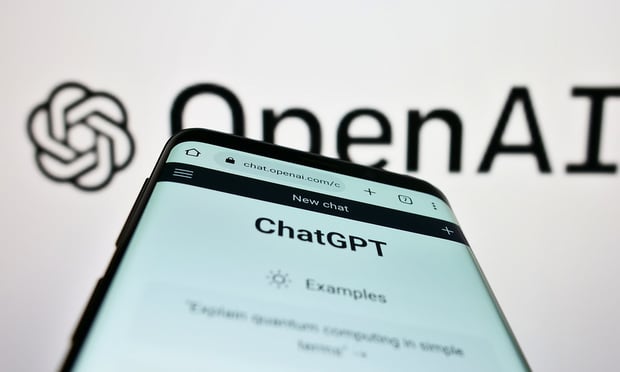Features

Emojis in the Workplace: Innocent Fun or Discovery Hazard?
Emojis can be equally troublesome in any type of business legal case. How are your employees using emojis in text messaging? Awareness can be an important part of risk reduction. We have compiled here a few case law examples where the use of emojis in business communications had surprising legal ramifications.
Features

Blazing Saddles or Blazing Trails: e-Discovery vs. Forensic Data Collection — Unraveling the Critical Differences
Attorneys interested in legal technology, data security and e-discovery must grasp the critical differences between two essential methodologies: e-discovery and digital forensics. This article delves into the contrasting features of these methodologies to help attorneys who engage with legal technology better understand the significance of these differences.
Features

Legal Tech: TAR As a Reincarnation of Human Review
This article seeks to provide clarity and context on the different types of AI available in the legal industry today and how the new GPT technology fits into that landscape. More importantly, it will illustrate the potential impact of the next generation of AI on litigation and legal practice as a whole.
Features

Legal Tech: How Linguistics Can Help With Modern E-discovery
Perhaps the effort to get lawyers comfortable with emerging AI technologies needs to start with the fact that they use models constructed by another group of professionals with a different type of mastery of language — linguists.
Features

Legal Tech: 10 Things I Hate About Your QC Plan
It is essential to have a quality control plan to ensure the accuracy and completeness of your review are consistent with the certification requirements of Rule 26(g) of the FRCP. To help make this process smoother, we've compiled a list of 10 common mistakes in poorly designed QC plans along with practical tips for developing your QC plan so you can avoid these pitfalls.
Features

Legal Tech: EDRM Is Getting a Facelift: Version 2.0 Is Coming
With proliferating data sources from collaboration apps, cloud technology and innovations like generative AI, along with evolving international data transfer regimes, e-discovery is in a rapid evolution. And the EDRM model is currently in the process of being updated to reflect that.
Features

Best Practices in Second Request Document Review: How to Execute An E-discovery-Based Plan
Part 2 of a Two-Part Article Part 1 of this article discussed approaches to managing second requests using core project management principles that allow you to control the timeliness, cost, and quality of your organization's response. This follow-up looks at the pragmatics of strategizing and executing a successful plan.
Features

Legal Tech: The Attorney-Client Privilege Purpose Requirement and E-Discovery
On Jan. 9, the U.S. Supreme Court heard oral argument on whether the attorney-client privilege protects against disclosure of dual-purpose communications — where the communications contain both legal and nonlegal advice.
Features

Best Practices In Second Request Document Review: Eliminating the Fear Factor
Part One of a Two-Part Article: Challenges and solutions in document review HSR second requests have become increasingly common in mergers or acquisitions that meet the premerger reporting threshold, which in 2022 was a transaction value of more than $101 million. The burdens of complying with second requests are onerous. The mere thought of undergoing such an exercise tends to strike fear in the heart of the legal department. In this article series, we'll outline the major challenges of second requests, suggest strategies to overcome them, and discuss how to face a second request with equanimity and confidence.
Features

Is Asking E-Discovery Vendors for Indemnification for Data Breaches Provide Security of Clients' Data?
Threats of cyberattacks have not only made legal professionals more wary — especially as legal teams in firms and in-house are increasingly the target of cyber hackers — but it has also changed their relationship with vendors.
Need Help?
- Prefer an IP authenticated environment? Request a transition or call 800-756-8993.
- Need other assistance? email Customer Service or call 1-877-256-2472.
MOST POPULAR STORIES
- Strategy vs. Tactics: Two Sides of a Difficult CoinWith each successive large-scale cyber attack, it is slowly becoming clear that ransomware attacks are targeting the critical infrastructure of the most powerful country on the planet. Understanding the strategy, and tactics of our opponents, as well as the strategy and the tactics we implement as a response are vital to victory.Read More ›
- Coverage Issues Stemming from Dry Cleaner Contamination SuitsIn recent years, there has been a growing number of dry cleaners claiming to be "organic," "green," or "eco-friendly." While that may be true with respect to some, many dry cleaners continue to use a cleaning method involving the use of a solvent called perchloroethylene, commonly known as perc. And, there seems to be an increasing number of lawsuits stemming from environmental problems associated with historic dry cleaning operations utilizing this chemical.Read More ›
- The Bankruptcy Code's Anti-Discrimination Section and COVID-19The pandemic has spurred analysis of legal issues as businesses grapple with their respective relationships with both private and public entities. In this article, the authors examine Section 525 of the Bankruptcy Code — the anti-discrimination section, and its implications during COVID-19.Read More ›
- New York's Guaranty Law Continues to Divide OpinionThis article discusses the recent developments surrounding the constitutionality of New York's Guaranty Law. In particular, we address the Southern District's view that the statute is unconstitutional and the splintered view of the statute's constitutionality expressed by New York State courts.Read More ›
- Use of Deferred Prosecution Agreements In White Collar InvestigationsThis article discusses the practical and policy reasons for the use of DPAs and NPAs in white-collar criminal investigations, and considers the NDAA's new reporting provision and its relationship with other efforts to enhance transparency in DOJ decision-making.Read More ›
